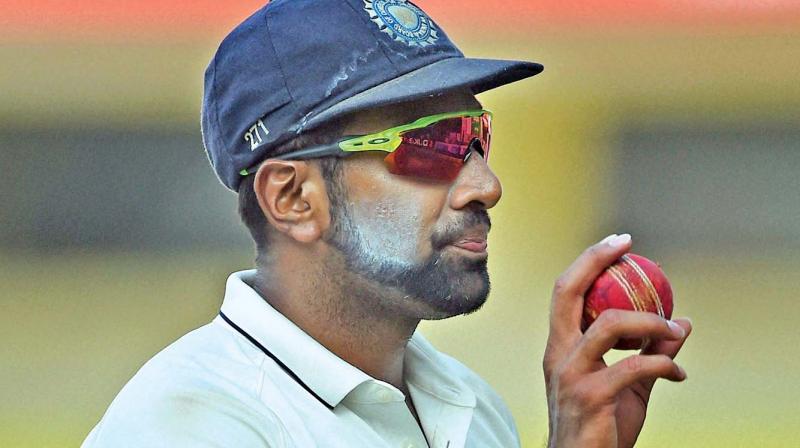Ashwin's attributes make him formidable

In spite of a rousing performance against New Zealand some critics still question Ravichandran Ashwin’s ability because his record overseas is not as impressive as on Indian pitches. This is specious argument.
The pitches were the same for all bowlers, and if one succeeds to the extent Ashwin did (27 wickets in 3 Tests), then clearly he is doing something that others haven’t. Or can’t.
Prior to the New Zealand series, Ashwin had 69 Tests in 11 Tests (21 in 3 v Lanka, 31 in 4 v South Africa and 17 in 4 v West Indies), giving him a consolidated tally of 97 wickets in 14 Tests. This works to an amazing 7 wickets per match!
Two these series were also played overseas, versus Sri Lanka and West Indies. It can be argued that the Lankans are in the process of rebuilding and West Indians are not the force they once were. But you can only bowl at the opposition you receive.
Overall, in the 5-odd years since his Test debut, Ashwin has a whopping 220 wickets in 39 Tests giving him the second best strike rate (per Test) after Clarrie Grimmett. Only the churlish would deride such achievement.
There can be legitimate debate about Ashwin’s degree of excellence vis-à-vis the great spinners from India (or elsewhere), but to undermine him just because most of his wickets have come at home’ is to ignore cricket history and misunderstand it’s ethos.
To get things in perspective, the records of India’s finest spinners before Ashwin are telling. From Vinoo Mankad, Subhash Gupte, Erapalli Prasanna, Bishen Bedi, Bhagwat Chandrashekhar, S Venkataraghavan, Anil Kumble and Harbhajan Singh, only Gupte’s Test strike rate is similar overseas. All others fared better in home conditions.
Criticism of Ashwin’s success (indeed of most Indian spinners over the years) on home pitches is often couched in the moral argument that India’s pitches are doctored to suit slow bowlers and do not serve the larger cause of cricket therefore. This is dubious righteousness.
The great charm of cricket (especially the longest format) is that conditions — weather, ground, pitch — differ from country to country, sometimes even from venue to venue. It is these imponderables that put the players to a real test of talent and temperament.
Standardisation of pitches, would rob the sport of this great challenge for players. In England and New Zealand, conditions assist seam and swing bowling, in Australia and South Africa pitches have pace and bounce, in the sub-continent the weather and surfaces help spinners.
This has been the fascinating diversity on which cricket has been structured. Fiddling around with it is neither desirable, nor indeed may be possible unless the sport is moved indoors.
I am not advocating for pitches that crumble on the first day or those that make a decent contest between bat and ball impossible. Rather, that the nature of this contest will vary from country to country. In that respect, the sub-continent being favourable for slow bowlers is not retrograde.
The best players — batsmen and bowlers — learn to adapt and excel in different conditions. In most cases though some skew of being better at home inevitably remains, but that is not a negative aspect unless the gulf is very, very wide.
Coming back to Ashwin, of course he has to do better overseas too. Following his rapid progress in the past year or so, I reckon this could be more a function of time, experience — and some luck — rather than just talent.
What is striking about Ashwin is that he is deeply ambitious, seriously competitive, and a very keen student of the game. These attributes when blended with talent make for a formidable cricketer.
He is astute, reads the game well, is mentally tough and loves to engage in a battle of ego and wits with batsmen. He is a risk-taker given his penchant for improvisation, but also understands the virtues of discipline and control.
All of which makes him a India’s most potent match-winner currently. And we haven’t got down to talking about his batting as yet.

